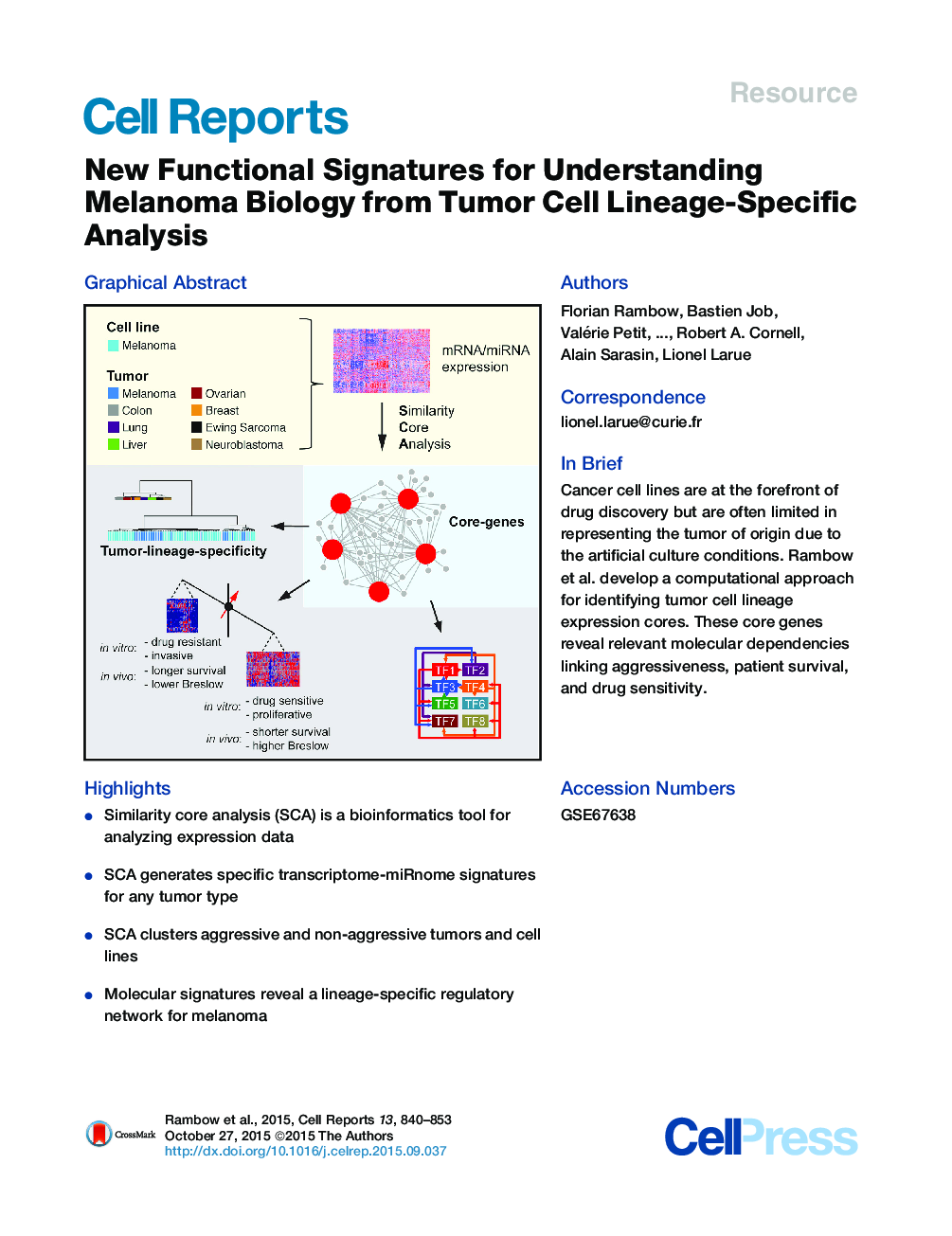| Article ID | Journal | Published Year | Pages | File Type |
|---|---|---|---|---|
| 2039402 | Cell Reports | 2015 | 14 Pages |
•Similarity core analysis (SCA) is a bioinformatics tool for analyzing expression data•SCA generates specific transcriptome-miRnome signatures for any tumor type•SCA clusters aggressive and non-aggressive tumors and cell lines•Molecular signatures reveal a lineage-specific regulatory network for melanoma
SummaryMolecular signatures specific to particular tumor types are required to design treatments for resistant tumors. However, it remains unclear whether tumors and corresponding cell lines used for drug development share such signatures. We developed similarity core analysis (SCA), a universal and unsupervised computational framework for extracting core molecular features common to tumors and cell lines. We applied SCA to mRNA/miRNA expression data from various sources, comparing melanoma cell lines and metastases. The signature obtained was associated with phenotypic characteristics in vitro, and the core genes CAPN3 and TRIM63 were implicated in melanoma cell migration/invasion. About 90% of the melanoma signature genes belong to an intrinsic network of transcription factors governing neural development (TFAP2A, DLX2, ALX1, MITF, PAX3, SOX10, LEF1, and GAS7) and miRNAs (211-5p, 221-3p, and 10a-5p). The SCA signature effectively discriminated between two subpopulations of melanoma patients differing in overall survival, and classified MEKi/BRAFi-resistant and -sensitive melanoma cell lines.
Graphical AbstractFigure optionsDownload full-size imageDownload as PowerPoint slide
